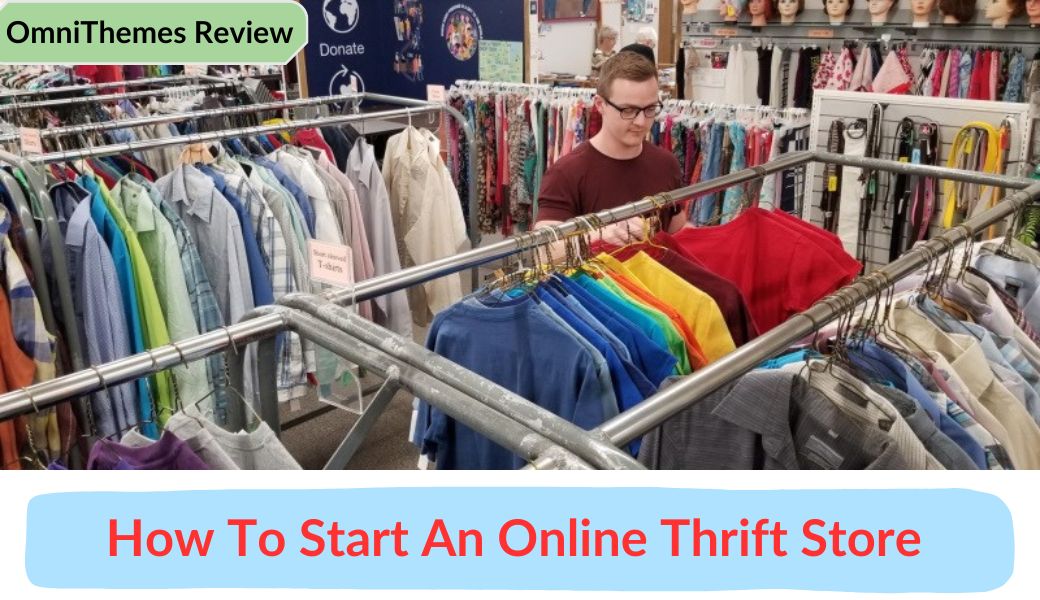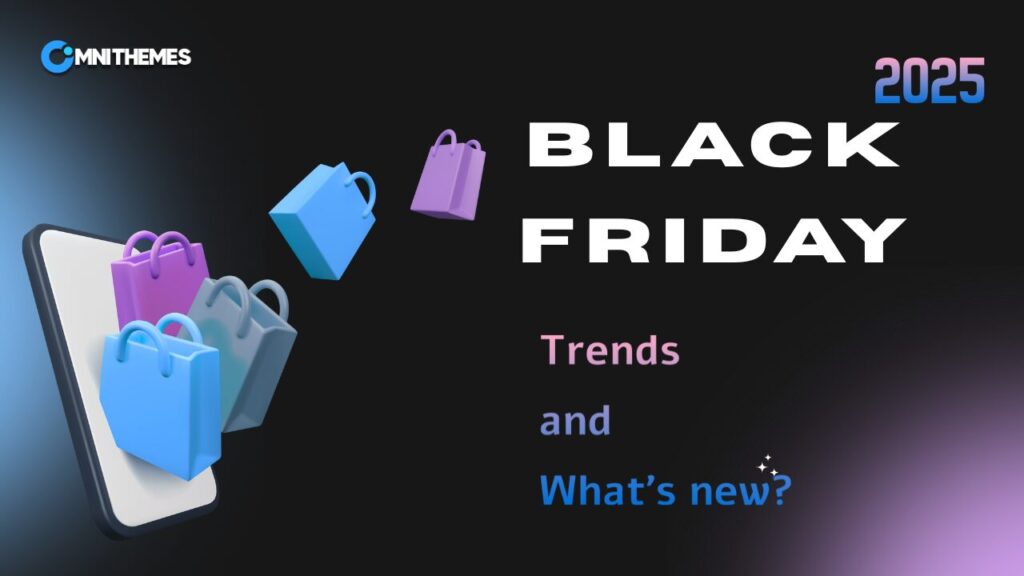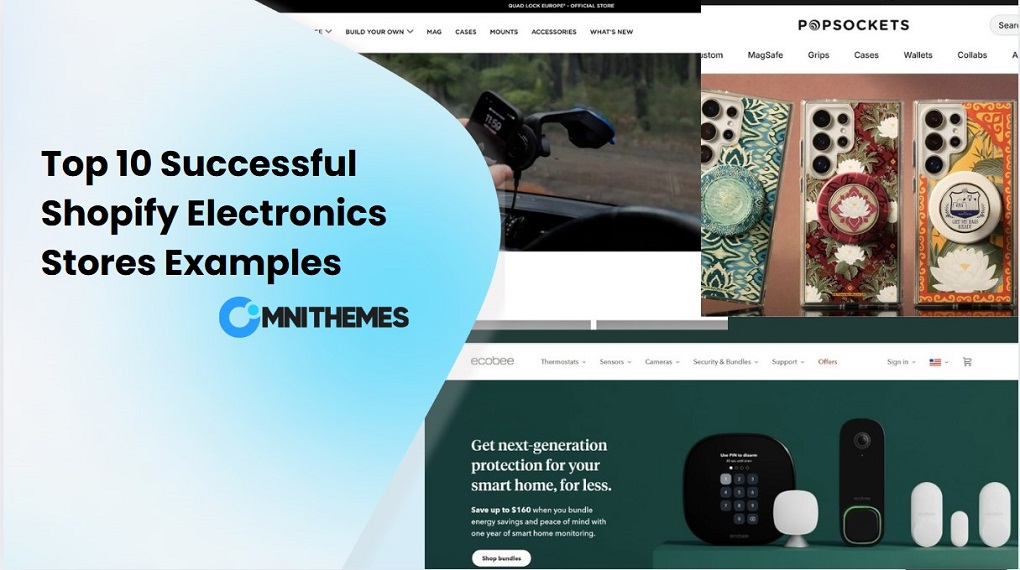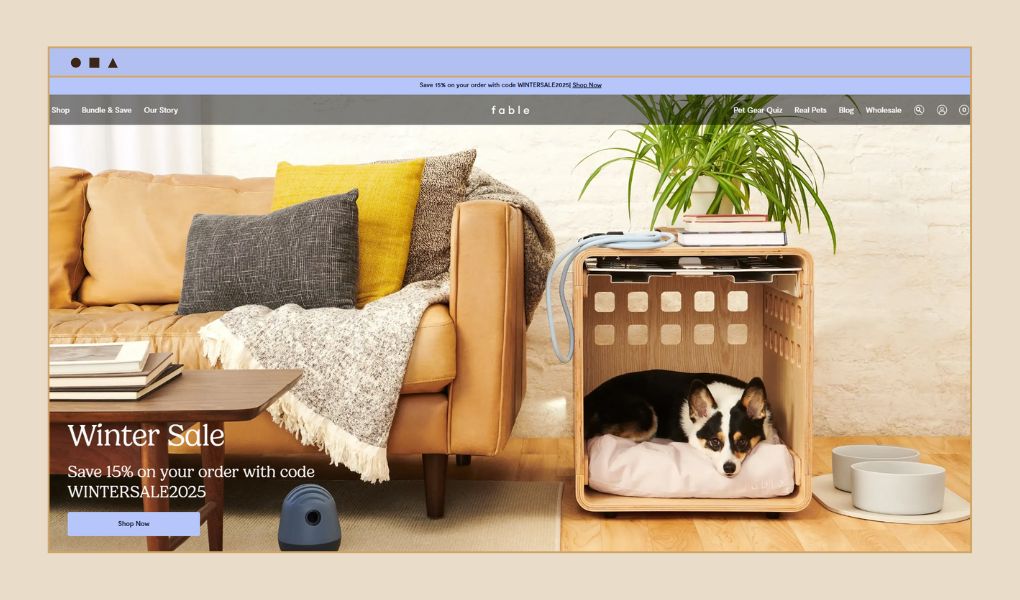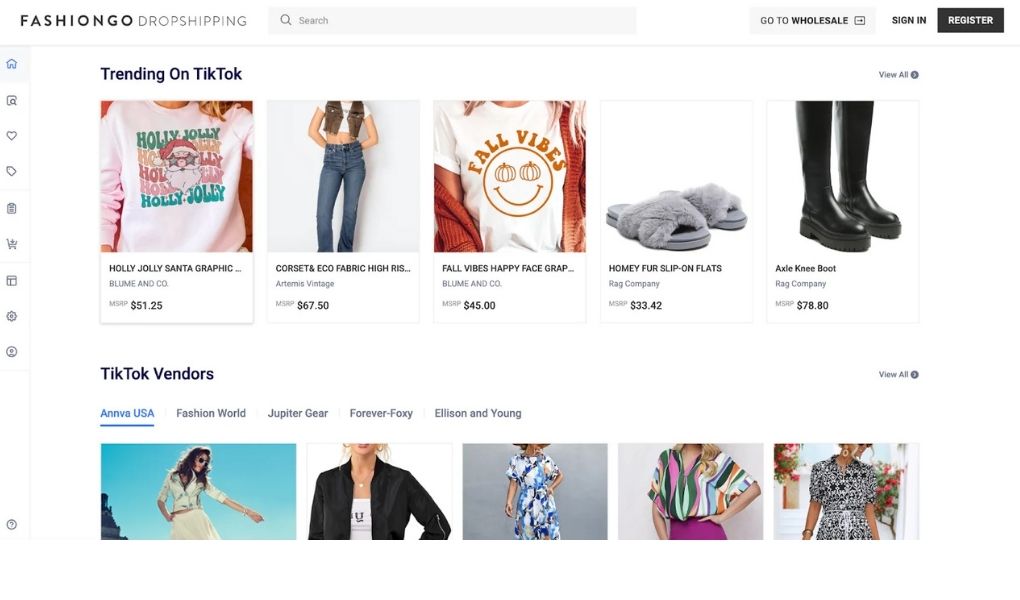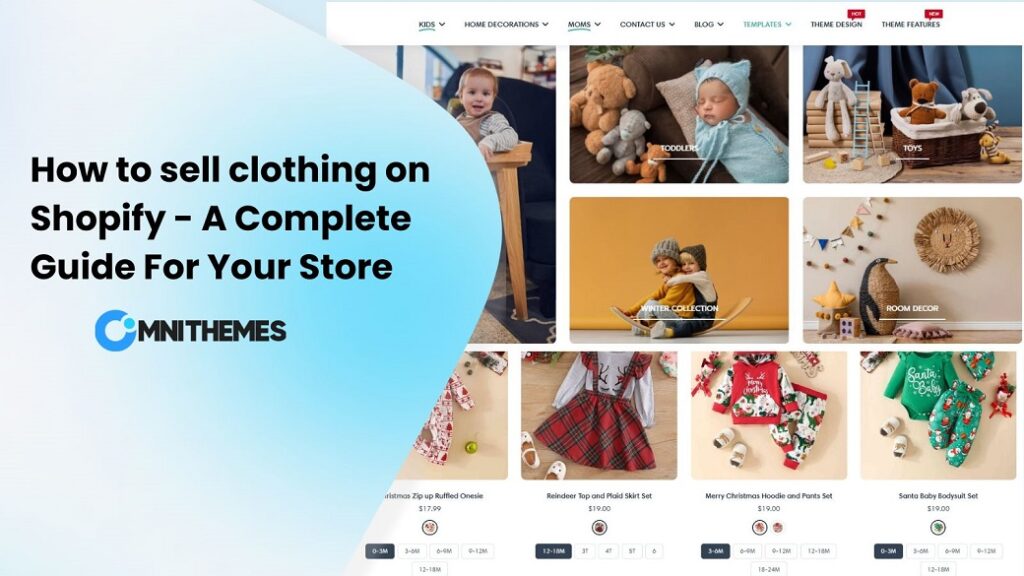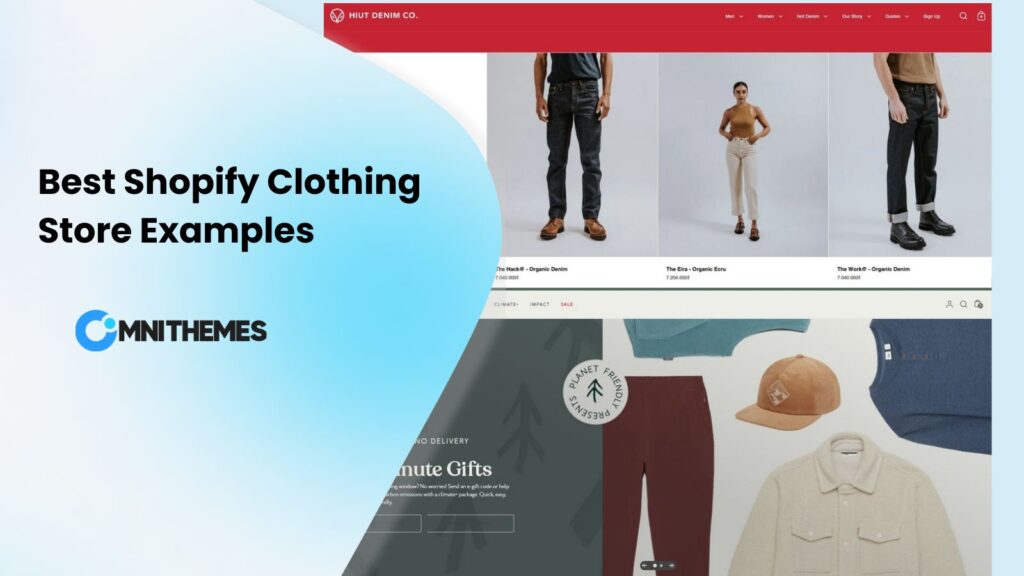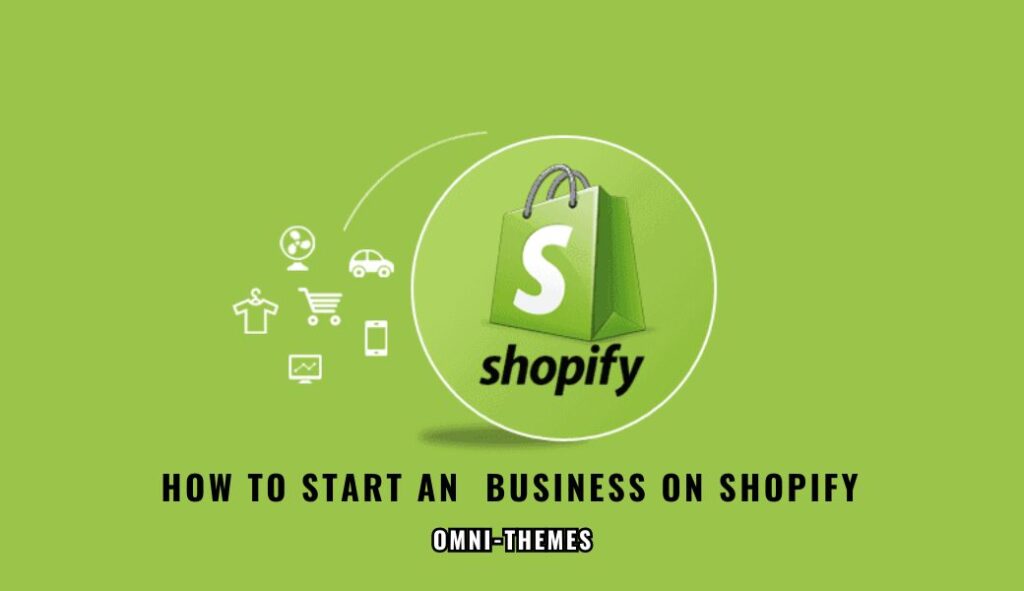Online thrift stores are electronic markets where people may trade used apparel, accessories, and other goods. They let customers locate one-of-a-kind items, cut waste, and encourage circular fashion while providing an economical and environmentally friendly substitute for traditional retail.
There has never been a more favorable moment to enter the online thrift store industry. Its popularity has also been aided by social media shopping platforms, which have expanded its audience and spurred the growth of specialty thrift stores. Then, there is cutting-edge technology that may be used to further enhance the thrifting experience, such as machine learning (ML) and artificial intelligence (AI).
But how exactly can you open a brand new online thrift store if you have no experience in this field before? Fear not, since we are here to provide you with detailed instructions on how to start an online thrift store from the beginning till the operation stage.
How to start an online thrift store | Detailed steps
Let’s waste no time but start investigating the step-by-step guide on how to start an online thrift store from scratch:
Select the niche from market research
Researching the market is the first step in starting an online thrift business. The purpose of this study is to ascertain whether your company strategy is feasible for a certain market and to comprehend client preferences.
Additionally, it will enable you to assess the market’s existing situation and make sure that competing ideas haven’t already taken over. In order to determine what is popular, successful, and appealing to customers, you also need to examine the current online thrift stores in the US and other countries.
Doing market research for your charity store can help you understand more about your target market, including who your clients are, what kinds of products they enjoy, how often they buy new items, etc., in addition to statistics and industry trends.
The data that you get at this stage will also be very helpful in creating your budget and coming up with ideas for your thrift online store. See what people like and dislike by visiting various well-known online thrift stores, reading reviews, speaking with regular customers, and gathering more information.
Example niches
If clothing is your main interest, “vintage dresses” from various historical periods may be an intriguing market. Focus on providing dresses from the 1950s, 1960s, or 1970s to appeal to people who enjoy retro style.
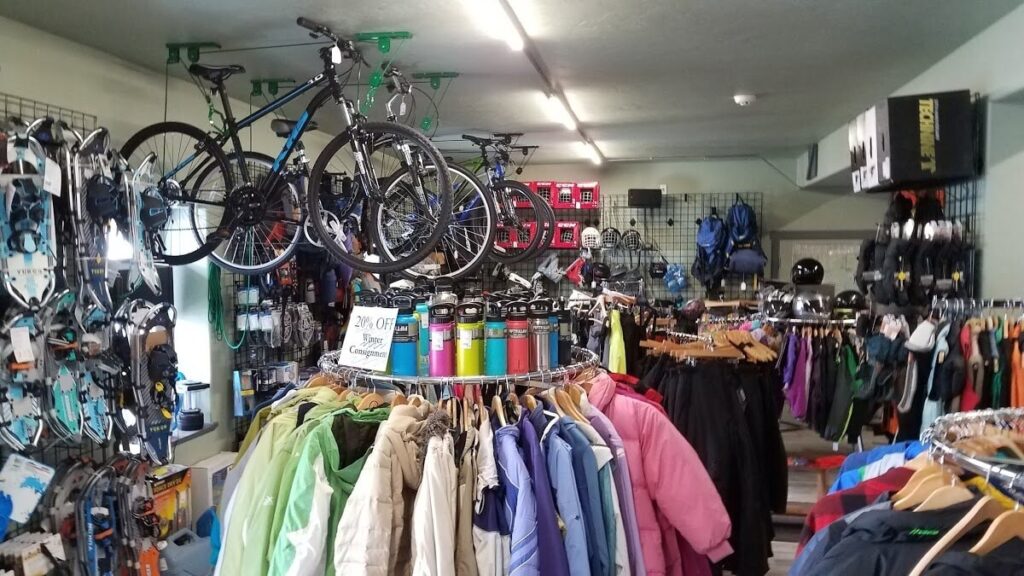
However, if you have a taste for classic accessories, “antique jewellery” may be quite tempting. Present a variety of antique or vintage jewelry to appeal to those who value traditional and timeless accessories.
You want to provide a distinctive experience with your online thrift store. To do this, you must offer a well-chosen assortment of goods. Select a niche that you are interested in and have some knowledge of. The following are some typical products that operators of thrift stores ought to think about selling:
- Furniture
- Appliances
- Clothing
- Books
- Sporting goods
- Art
- Shoes
- Boutique
- Collected goods
Establish your own online brand
It’s time to consider your online brand after you’ve determined which specialty is best for your online thrift business. Your brand is the narrative you wish to convey about your company. Generally speaking, the primary message of the brand should be reflected in the name, logo, design, and style. There are lots of components to prepare to build your own brand, so make sure you can get all of them.
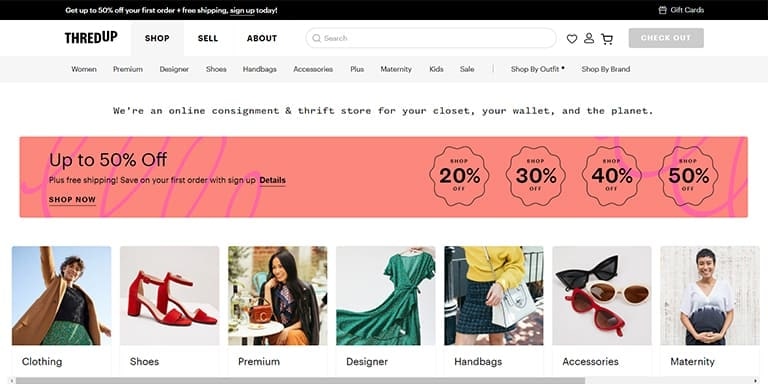
Later on, we’ll talk about marketing and promotion, but in the meantime, especially if you want to sell clothes, there’s no need to wait until you’ve opened for business to get started. Start sharing pictures that align with your brand’s image to establish a kind of “mood board” and build anticipation for upcoming developments.
Think of a suitable business name
Business name is a crucial component of the online thrift business. Make sure your store name is concise first. A strong brand name needs to be brief, distinctive, and memorable. A short brand name is simpler for consumers to recall than a long one. Second, the name of your store ought to be evocative. Customers should be able to quickly discern what you sell or what makes your store unique from your brand.
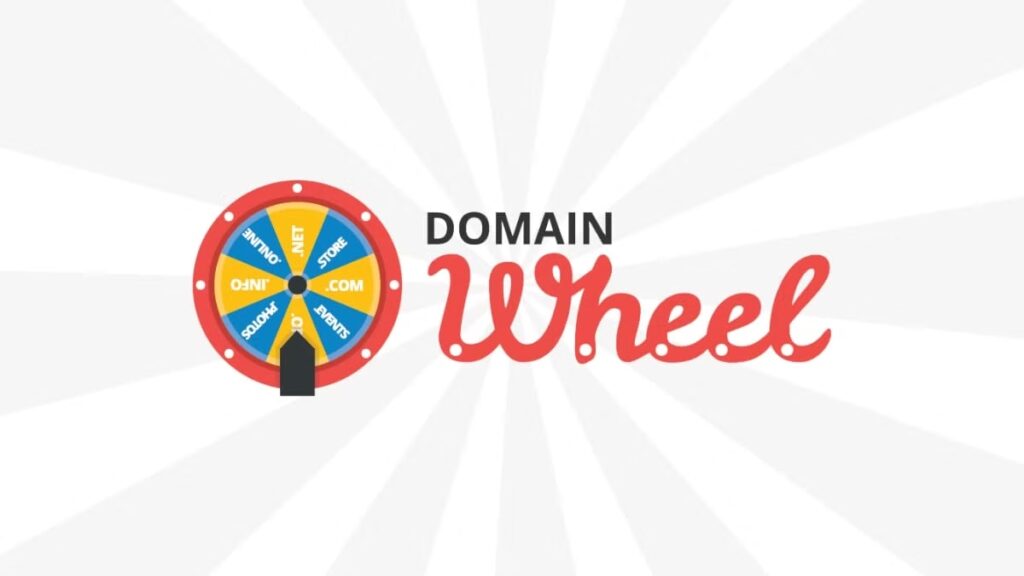
Finally, choose a name that is simple to say and spell. It will be difficult for potential customers to discover your store online if they cannot spell your company name. In relation to having a strong online presence, a great company name also functions well as a domain name for unified branding. The distinct internet address of your business is its domain name. It facilitates customers finding your company online.
Write a complete budgeting plan
No online thrift business can be conducted correctly without a clear budgeting plan with all the crucial details. To maintain your online thrifty store on course, you need a business strategy that is sound financially. You’ll need to set aside money early on for purchases and calculate the right markup for goods in order to pay for costs and turn a profit.
A 300% markup is generally considered a decent guideline, according to many resale sellers; nevertheless, some online thrift businesses will discover a sweet spot that falls outside or above this range.1. For instance, you want to try to sell a $30 antique clothing you bought for $30 on your online thrift store for $90. You might want to think about different products or change your pricing strategy if you don’t think you can make that much money.
When you arrange your finances, you should also consider if you want to open an online consignment business. Consignment businesses provide goods other than your own that you have personally purchased. Unlike a regular thrift store, the consignment strategy pays consignors a 60/40 split, meaning you keep 40% of the profit from committed items and give the consignor 60%.
Set up the online store
Now is the time for you to open an online store and put every preparation into your platform. To be more precise, before you begin purchasing your items, you must decide how you want to sell them. There are three options available to you for launching an online thrift store. Let’s view all of those three choices below:
Open an eCommerce store
For novice sellers, eCommerce platforms offer the easiest method to get started with online sales. Without requiring technical knowledge, merchants may choose and alter themes on the majority of eCommerce platforms.
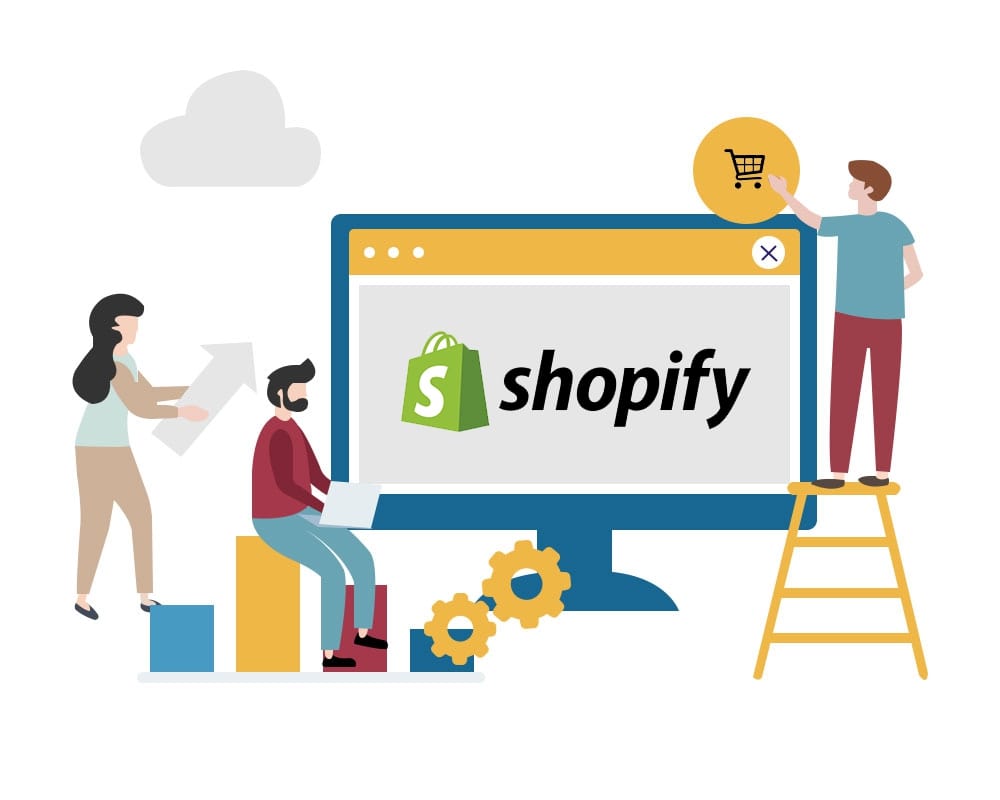
For most sellers, especially those with smaller businesses, eCommerce platforms are far more convenient than bespoke websites, which are quite expensive to construct and require a lot of maintenance. A specialized support staff is also provided by the majority of eCommerce systems to assist you in setting up your business. Magento, GoDaddy, WooCommerce, Zyro, Volusion, Wix, and Shopify are a few of the top eCommerce site builders.
From my own experience with different online eCommerce platforms, Shopify is currently being used by millions of online merchants worldwide, making it one of the most reliable eCommerce choices. The platform provides everything you need to get started on an online store, like themes, integrated apps, payment gateways, shipping options, basic-to-advanced features, etc.
As a result, you can select Shopify to build your first online thrift store.
Let’s check some related posts:
- How to Start Shopify Clothing Dropshipping: A Beginner’s Guide
- How To Sell Clothing On Shopify – A Complete Guide For Your Store
Sell through online marketplaces
Selling on online stores like Amazon or substitutes like eBay is a terrific method to reach a wider audience. It’s also really convenient to do this. Every day, millions of consumers visit these online retailers to make purchases. Reaching such a wide audience is almost unattainable for new enterprises and small stores.
Conversely, online markets give thrift stores a way to reach a far wider audience. Furthermore, these markets are more dependable since they have fewer technological issues. Nevertheless, there is a lot of rivalry, and costs can mount up and severely reduce your profit margins.
You should also think about Tradesy, Refashioner, Urban Renewal, Goodwill, The Real Real, Beyond Retro, Patagonia Worn Wear, and Luxury Garage Sale, among other well-known online marketplaces. Although using internet marketplaces is OK, it’s not a very good long-term option. It’s usually advisable to sell on both of these markets in addition to your own website. Simply remember to entice customers to visit your website.
Find the source of your online products
Once your online store building process finishes, you need to find the source of the products you plan to sell instantly since you will be displaying them within your online thrift store. Purchasing goods for a thrift store differs from other forms of retail sourcing. It’s unusual to be able to purchase your inventory in large quantities because each item in a thrift store is unique.
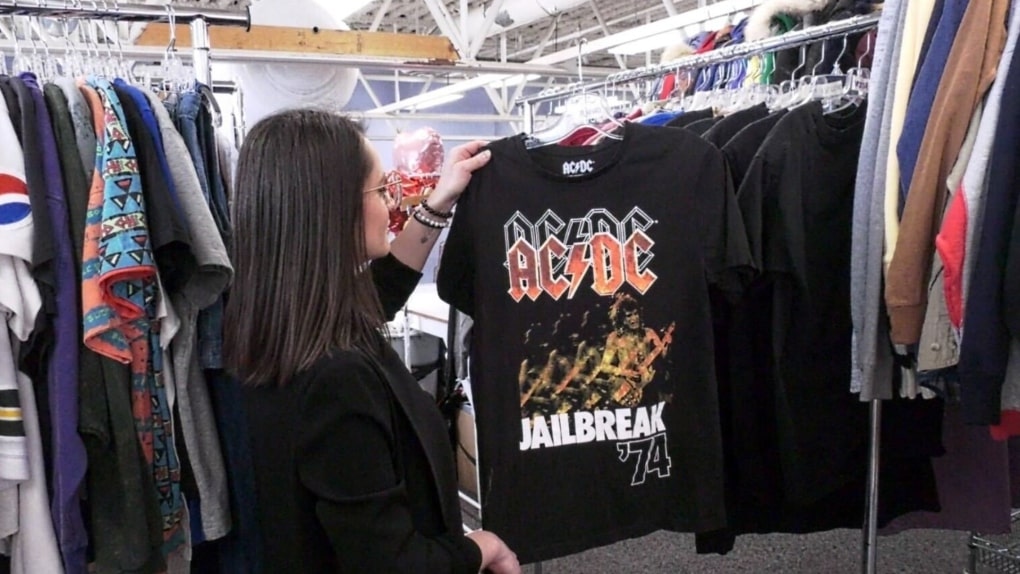
Stay focused and refrain from investing a lot of money on something you’re not sure will sell well. To find possible sources for your thrift store, you can try going to garage sales, thrift stores, and other internet thrift hotspots like eBay, clearance stores, consignment stores, flea markets, etc.
Additionally, you may obtain your things from yard sales, moving sales, estate sales, and donations from community events. Just remember that you will need to spend more time creating your collection, the less expensive it is.
Note: For even greater finds, consider visiting thrift stores in wealthier districts (where the stock is likely of higher quality) or further out of town (where nice goods are less likely to be bought quickly).
Once you have your merchandise, keeping an eye on inventory management becomes essential. Typically, inventory management software that tracks products from all of your sales channels is the most popular method for managing inventory at a thrift store. Choose the best thrift shop point-of-sale system to link with your online storefronts if you own a physical store.
Continue reading to figure out how you can store the products after the sourcing of possible products.
Form up a storage system
The next concern is where to put your product now that it’s prepared for sale. Since you are selling online, you need to gather your products in a centralized inventory for better management. You may be able to use more room at home if you’re just starting off. But this will swiftly spiral out of control. It’s critical to think about a more permanent location early on so that you can make the necessary adjustments as your company expands.
For the majority of internet merchants, this entails leasing a storage space. Establishing and maintaining a system for keeping and monitoring your inventory is not as crucial as stockroom management. It’s also advised that you arrange your inventory storage such that it corresponds with the online categories.
Additionally, you’ll want an inventory monitoring system. This is crucial for every online retailer, but it’s especially important for owners of thrift and antique stores because once your unique product sells out, it truly sells out!
Based on our personal experience, we believe that storing your product in a manner consistent with its online classification makes the most sense. If you sell both men’s and women’s apparel, we should definitely divide it into categories according to clothing type or season. When it comes time to mail anything off, this makes finding it simple.
Due in part to the all-in-one simplicity of selling on your own website, most ecommerce platforms come with excellent inventory management solutions. And Shopify’s capabilities, which help your business remain on track, such as the ability to manage items across all sales channels and automatically sync stock numbers, really pleased us.
Take high-quality product images
In order to gain the trust of clients who visit your thrift store and shop online, you need to take high-quality images that can highlight the products you sell.
A product image is crucial for the 1st impression of a customer, and if you have one that works well, it may bring in thousands of dollars for your virtual thrift store. Taking polished pictures that highlight your products is essential to having a profitable online store. Your item may seem shabby in dark, blurry photos, turning off potential purchasers.
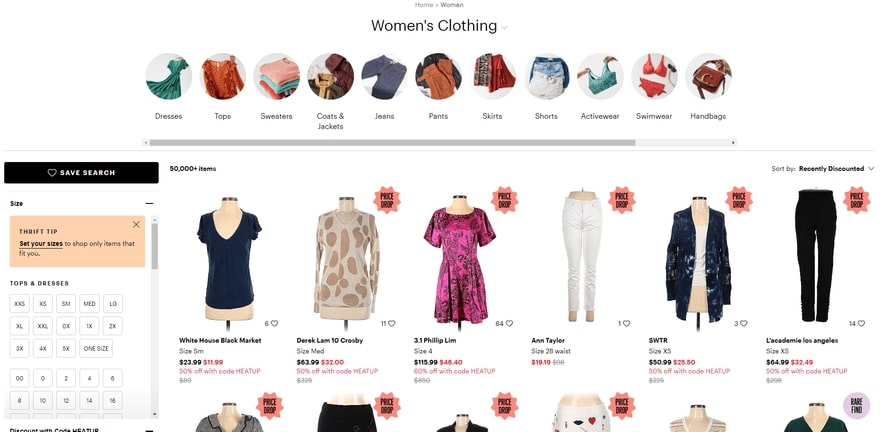
If you sell apparel, you should think about utilizing human models in addition to paying attention to staging and lighting. In a similar vein, create simple vignettes that highlight house accents. By demonstrating how to decorate your products, you may help purchasers see their own uses, which will encourage further sales.
Smartphones can help you take pictures if you don’t have a lot of money to spend on an expensive camera. Investing in anything more high-tech doesn’t really make sense, especially initially, since modern smartphones have such great cameras. However, avoid using any filters at all and just slightly alter your photos overall. If you go overboard with this, your photos may begin to appear gaudy or mismatched since the colors in them won’t match the objects.
Remember that one image is probably not going to be sufficient unless you’re showcasing a very basic product. Try to get a photo from all angles and up close to capture any significant elements or intricacy. Furthermore, don’t be afraid to admit your flaws—honesty is the best policy! Try to get four, five, or more pictures of every product to show every angle.
Set prices for your online products
It’s time to set your online product’s pricing now. Make sure that your product pricing is sufficient to support your online thrift business but not so costly as to prevent any sales.
It takes balance to determine the appropriate pricing for your reselling business. A product should not be overpriced in order to turn a profit, but it also shouldn’t be underpriced in order to attract potential customers. Two essential factors to take into account when setting your product’s price are managing your margins and researching your competitors.

Cover your expenses
Although it may seem quite simple, it’s crucial to consider all of your expenditures when setting your product’s price. In addition to the item’s price, you also need to account for shipping, packing, transaction/seller fees, and a percentage of your fixed expenditures, which are expenses that don’t fluctuate on a monthly basis, such as rent for storage space or a website builder subscription.
Platform-related costs
There will be costs associated with utilizing an e-commerce builder or selling on sites like Etsy. These platform costs must be taken into consideration when pricing your items since they are an inherent component of conducting business online. Make sure you are aware of the pricing structures associated with each platform to avoid any unpleasant surprises later on.
Check competitor’s price
A crucial factor to take into account when setting your product’s price is competition. You must offer competitive prices if you’re selling in a crowded market. You have a little more leeway if your product is a little more personalized or unique, but it’s still a good idea to see what prices comparable products are fetching online.
Given the competitive nature of your sector, you must set competitive prices for your goods. You have a bit more wiggle room if you’re selling something a little more specialized or unique, but it’s always a good idea to compare web prices for comparable goods.
Margin management
The raw cost of your goods, shipping and handling charges, transaction/sales fees, and any fixed business expenditures (rent for storage, website hosting, IT support, staff, insurance, etc.) are all included in managing your margins.
Set up shipping methods
The establishment of a reliable shipping system is the final piece of the logistics jigsaw. Again, not to sound like a repeated record, but we already have an incredibly detailed guide to help you with the specifics of delivering your items. Here are some important guidelines and things to keep in mind:
Free, real-time, or flat shipping
Offering free shipping choice might be a very alluring offer to customers, but before you do so, be sure you’re making up for both the cost of the goods and the shipment. Additionally, we advise you to impose restrictions, such as a minimum order amount, and to only permit this inside the nation in which you are located.
You are essentially estimating delivery charges for an order based on the weight and location when you use a real-time shipping fee. You may use a calculator tool, such as this FedEx one, to confirm this with any major delivery company.
Then, if you’re using a website builder like Shopify, Wix, or BigCommerce, it immediately provides you with carrier estimates to allow you to easily pick between a flat-rate shipping cost or rates dependent on weight — making free shipping simple. Alternatively, you may input a separate shipping price for each item.
Although it takes a little more work, calculated shipping is beneficial for retailers selling large, variably weighed products, such as furniture, because the cost of shipping will probably range significantly across items. You can save money by using Shopify’s calculated shipping option, which uses USPS and Canada Post during the checkout and is accessible for all plans.
The simplest solution is to have a flat shipping fee. This entails figuring out your shipping costs on average and then applying this amount to each delivery as a flat fee. In this manner, shipping certain large items may cost you a little money, but all in all, it should save you a great deal of money and aggravation.
Implement different marketing strategies
With an online thrift store business, you need a solid marketing strategy to compete with other competitors in the marketplace. Here are some key marketing methods that you can utilize for your online thrifty store:
Social Media Marketing
Social media platforms are a goldmine for many companies to implement marketing campaigns, but thrift stores in particular. The most potent venues for any new eCommerce company, particularly one catering to a younger clientele, are likely Instagram and TikTok.
By sharing images of your items on Instagram and leveraging influencers to generate talk about your brand, you may grow your business. You may make stylish videos on TikTok that have the potential to become viral.
Meanwhile, Instagram is the preferred social media network among 16- to 24-year-olds who use the internet globally. Of TikTok’s user base, 47% are between the ages of 10 and 29, and 42% are between 30 and 49. In other words, TikTok is a cross-generational software that gives marketers access to a wide range of age consumers.
Paid Marketing
While social media advertisements and PPC (pay-per-click) marketing aren’t necessary for your business to succeed, you might want to give them some thought later on in the process of website promotion. This may be the moment when you’re confident that your site has a strong structure and system in place and when you have a solid sense of what works well for it. If you want to give your firm a little boost, it’s worth considering sponsored promotion.
SEO Marketing
You’re more likely to draw attention and draw in new and returning clients to your business the more visible your pages are in search results. It is, therefore, crucial to assist Google in comprehending the content of your website and positioning your website as an authoritative source of information in order to maximize the likelihood that your business will show up on the first page of Google’s search results for phrases relevant to your products.
Blogs like Ahrefs, Neil Patel, and Semrush can help you learn more about SEO if you’re interested in doing so. If you have the means, you may also contract with reputable digital marketing firms to handle the material on your website.
Use the Eurus theme to customize your online thrift store effectively
Shopify is a popular platform for starting low-cost online companies due to its simplicity of use and vast features. It helps businesses to easily set up and manage their online stores, making it an excellent alternative for both new and seasoned merchants.
Because of its comfort and ease of modification, the Eurus theme from BSS Commerce is a popular choice among online resellers when developing a platform for starting an online thrift company.
The theme is being used by millions of online stores due to its fast loading speed, lifetime support, lots of pre-made customization options, and a mobile-friendly interface for newbies. This theme now has five unique settings for various marketing reasons, each with a beautiful appearance.
Here are some key features that the Eurus theme can provide to make your thrift store stand out from the competition:
- Pop-up promotion: Online thrift merchants can display the latest store’s promotional programs, flash sales, new items coming, etc, to drive customers’ attention towards their brand.
- Countdown Timer: This creates a sense of urgency about the special programs of your store, which pushes shoppers to quickly come and shop at your thrift store online to take advantage of those limited deals.
- Estimated Shipping Rate: By knowing the estimated rates for different orders, online thrift stores can select the optimal choices to save money and time for their shipping activities.
- Before/After Image: This works as a quick comparison of the products, allowing customers to identify the effect of your products.
- 4-Level Mega Menu: With the 4-layer mega menu, online thrift merchants can easily showcase every product they sell online on the homepage, which saves time and effort for clients to search for a particular item.
- Smart Product Filtering: Clients can utilize the pre-built filters to choose their wanted products quickly based on their conditions & demands.
- Lookbook/Image Gallery: This provides shoppers with a closer look at the visual of your thrift store’s products.
- Estimated Delivery Date: The function is beneficial for customers since they can know the exact date that their orders arrive.
In conclusion
Establishing an online thrift store can be time-consuming and nerve-wracking, but if you put your mind to it, it can also be rewarding. Creating an internet-based thrift store might be a profitable business venture. There has never been a better time or place to sell vintage items. Follow Omnitheme for more interesting articles to update the latest flow of the eCommerce field.

